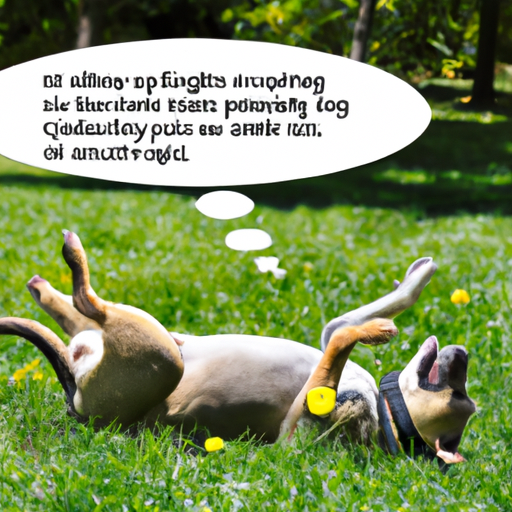Have you ever wondered why your furry friend likes to roll on their back? As a caregiver, understanding our pets’ behavior is essential in providing the best care for them. This guide will explore all the possible reasons behind this fascinating canine behavior.
1. Communication and Submission
One of the most common explanations for this behavior is submission. In the wild, wolves and other members of the canine family use this behavior to display deference to a more dominant pack member.
markdown
| Dog Behavior | Interpretation |
|-----------------|-------------------------|
| Rolls on back | Submission |
| Exposes belly | Trust, asking for petting |
| Wags tail | Excitement, happiness |
A dog rolling on its back and exposing its belly is a clear sign that it acknowledges your dominance and is willing to submit to your authority. It’s a way of saying, “You’re the boss, and I trust you.”
2. Scent Marking
Dogs have a very developed sense of smell, far superior to ours. They use this sense to communicate and learn about their environment. Rolling on their back, especially on new surfaces or objects, can be a way for them to pick up new scents or to leave their scent behind.
For instance, if you’ve ever noticed your dog rolling on a spot where another dog has urinated, they’re not trying to get dirty. Instead, they’re gathering information about the other dog, such as its health, diet, gender, and reproductive status.
3. Itching and Comfort
Another reason why your dog might be rolling on their back is simply because it feels good. If they have an itch they can’t reach, rolling on their back can provide some much-needed relief.
Consider the materials and surfaces your dog rolls on. Are they soft, like a freshly cleaned carpet, or textured, like a grassy field? Your dog may be rolling on these surfaces because they find the sensation enjoyable.
4. Seeking Attention
Let’s face it, dogs love attention, and rolling on their back can be a surefire way to get it. This behavior is especially common in dogs that have learned that rolling over leads to belly rubs. It’s their way of asking for affection.
5. Defensive Strategy
While less common, dogs might roll on their back as a defensive strategy. Exposing their teeth and claws allows them to defend themselves more effectively against predators.
This behavior will usually be accompanied by other signs of fear or aggression, such as growling, baring teeth, or a stiff body posture.
Frequently Asked Questions
1. Is it bad if my dog rolls on their back a lot?
In most cases, no. Dogs roll on their back for a variety of reasons, most of which are perfectly normal and harmless. However, if you notice excessive rolling accompanied by signs of discomfort such as scratching, licking, or biting at their skin, it could indicate a medical issue like allergies or parasites. In these cases, consult your vet.
2. How can I discourage my dog from rolling in smelly things?
Training and management are key. Teach your dog a reliable “leave it” command and use it when you see them about to roll. Additionally, managing their environment by avoiding areas where they tend to find smelly things to roll in can also help.
3. Is rolling on the back a sign of submission in all dogs?
While rolling on the back can be a sign of submission, it’s not always the case. Some dogs simply enjoy the sensation of rolling on their back, while others might do it to pick up or spread scents.
Remember, understanding our dogs’ behavior helps us provide them with a safe and comfortable environment. So next time your dog rolls on their back, you’ll know they’re not just being silly—they’re communicating in their unique, canine way.



